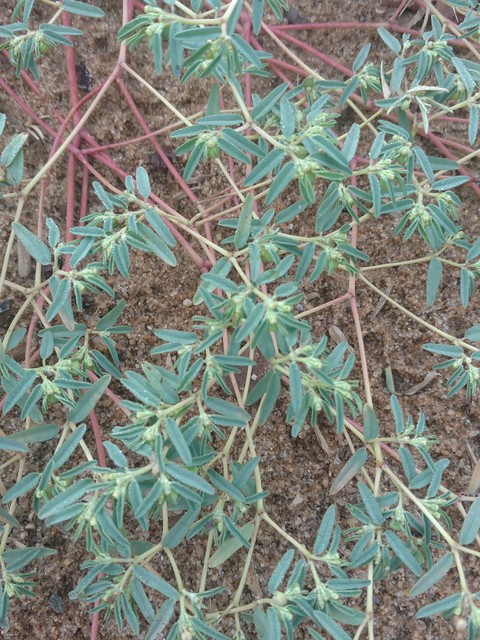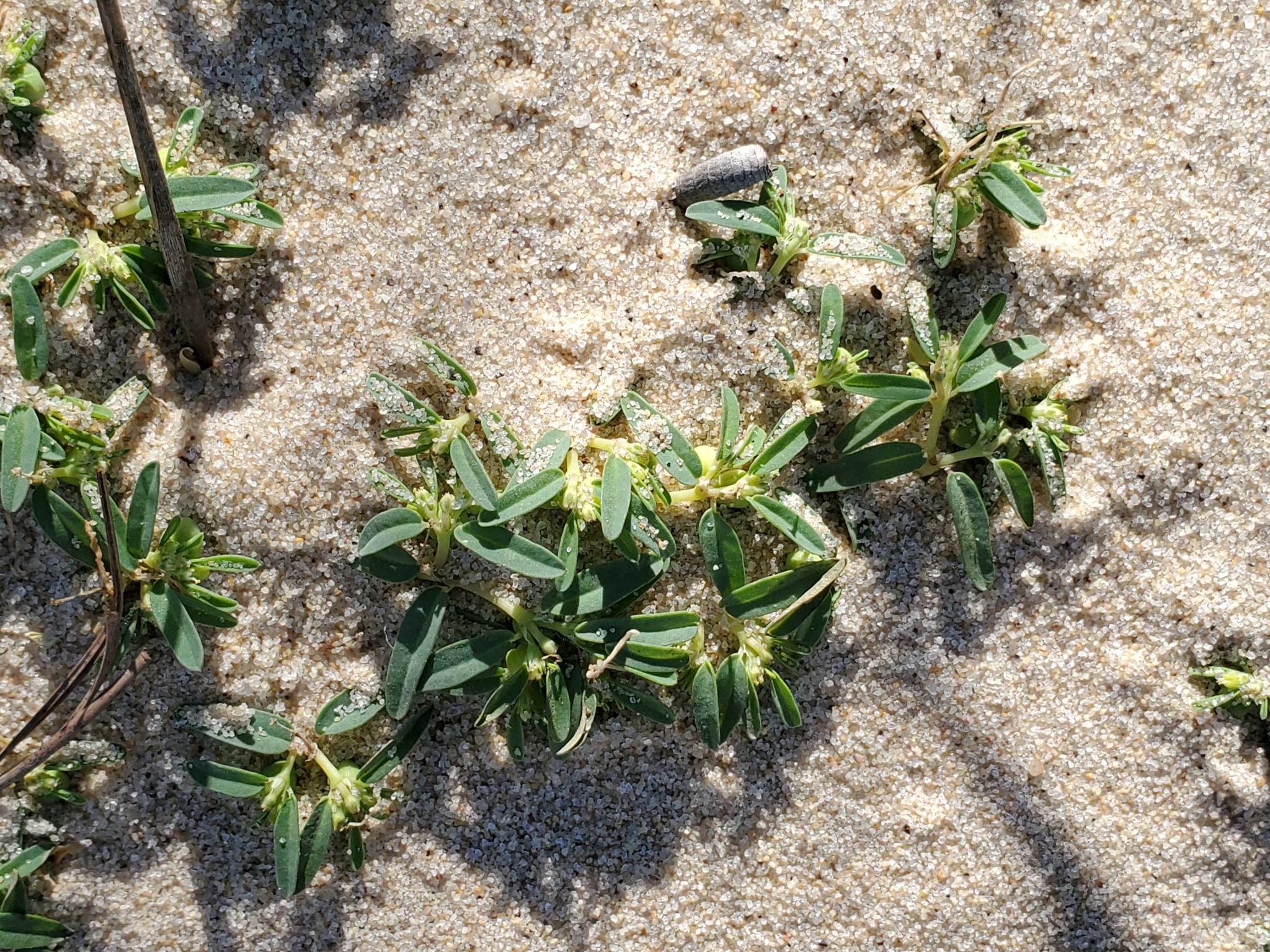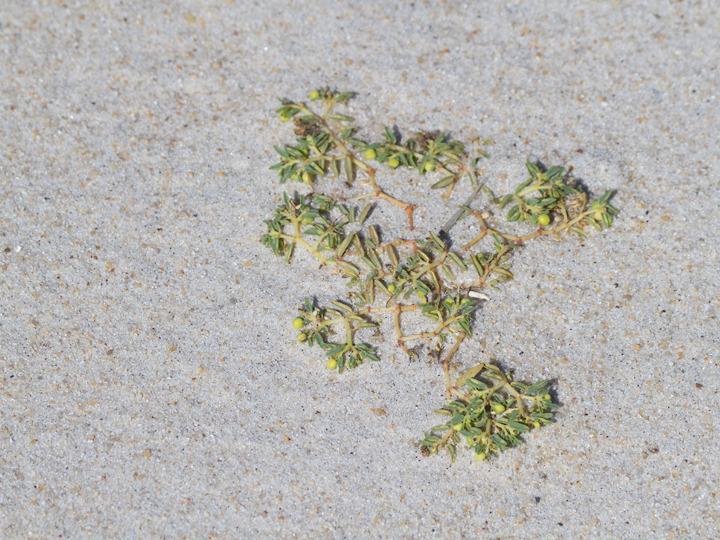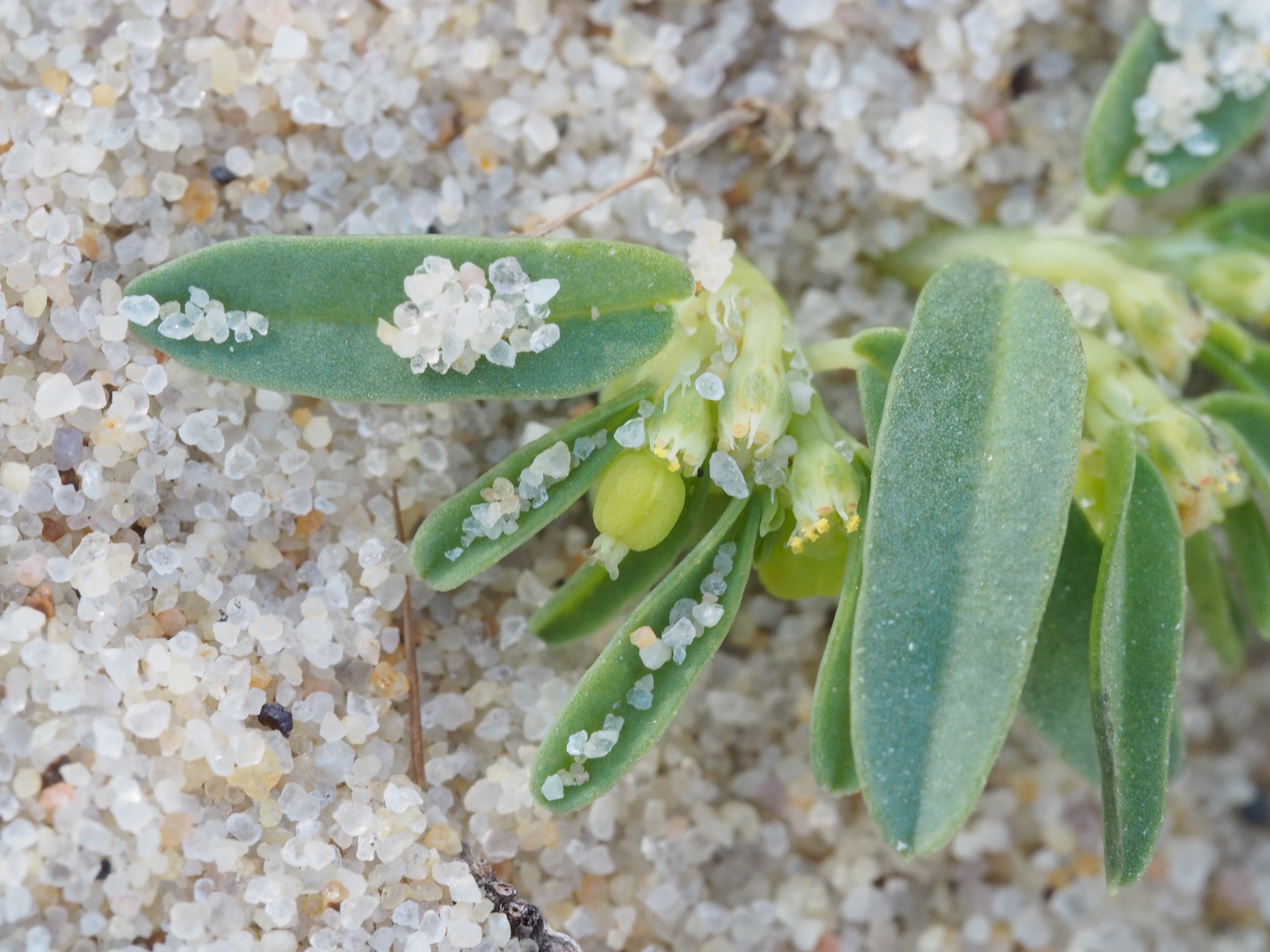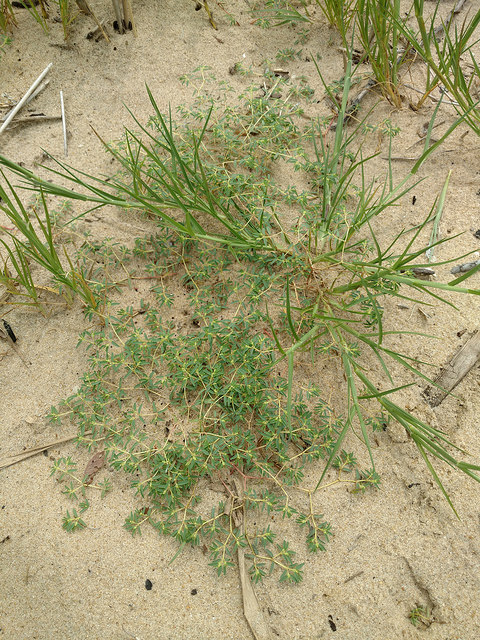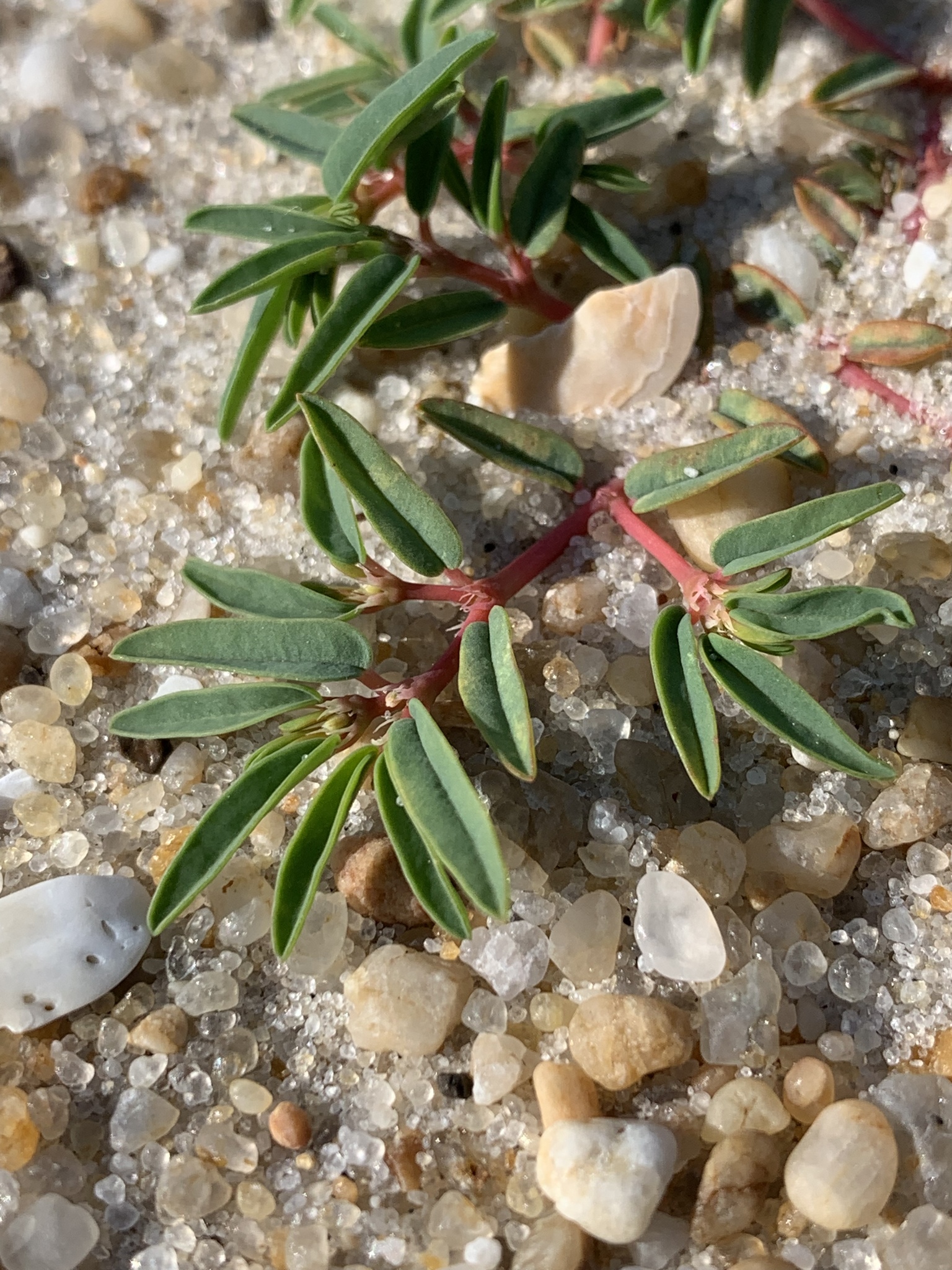Map Snapshot











72 Records
Status
Like Seaside Amaranth, Seaside Sandmat is a "fugitive annual." Seaside Sandmat grows on bare sands at the ends of accreting barrier islands and other coastal beaches from Nova Scotia to northeast Florida, and also around the Great Lakes. It does not tolerate competition from perennial plants that may serve to stabilize beaches and dunes, however, so when these stabilizing plants take over, Seaside Sandmat declines. Its seeds, though, blow and float to newly bare sandy areas and establish new "fugitive" populations. In contrast to Seabeach Amaranth, which has declined precipitously across its former range, Seaside Sandmat has maintained more stable populations.
Seasonality Snapshot
Source: Wikipedia
| Seaside sandmat | |
|---|---|

| |
| Scientific classification | |
| Kingdom: | Plantae |
| Clade: | Tracheophytes |
| Clade: | Angiosperms |
| Clade: | Eudicots |
| Clade: | Rosids |
| Order: | Malpighiales |
| Family: | Euphorbiaceae |
| Genus: | Euphorbia |
| Species: | E. polygonifolia
|
| Binomial name | |
| Euphorbia polygonifolia L. (1753)[1]
| |
| Synonyms[1] | |
| |
Euphorbia polygonifolia, known by the common names of seaside sandmat and seaside spurge, is a member of the spurge family, Euphorbiaceae. It is an annual herb, native to the east coast of the United States and the Great Lakes.[2] It has also been introduced to the Atlantic coasts of France and Spain.[1]
References
[edit]- ^ a b c "Euphorbia polygonifolia L.", Plants of the World Online, Royal Botanic Gardens, Kew, retrieved 4 December 2022
- ^ "Euphorbia polygonifolia". Global Biodiversity Information Facility. Retrieved 4 December 2022.
![]() Media related to Euphorbia polygonifolia at Wikimedia Commons
Media related to Euphorbia polygonifolia at Wikimedia Commons
![]() Data related to Euphorbia polygonifolia at Wikispecies
Data related to Euphorbia polygonifolia at Wikispecies
